Gold
-
A strong technical signal surfaced on GOLD - death cross (200-session moving average dropping below 50-session moving average)
-
The previous such situation took place at the beginning of 2021. Gold dropped almost 10% back then
-
Potential range of a drop from current levels may push gold price to as low as $1,600 per ounce
-
Gold may react to further USD strengthening - EURUSD drops to the lowest level in 20 years
-
Gold tends to be a solid performer during recessions. Bloomberg research based on 50 years of data shows that gold gains 50% on average compared to S&P 500 during recession (measured from 12 months before the official beginning of recession)
-
While gold price is little changed year-over-year, S&P 500 dropped 11% over the past 12 months
-
Moreover, gold prices also tend to rise significantly compared to silver during recession. Situation from the 1990s is a good example as gold traded at 70 ounces of silver at the beginning of that recession and at 100 ounces of silver at the end. Current gold price equals around 90 ounces of silver
 Bloomberg research shows that gold almost always outperformed S&P 500 during recessions. Source: Bloomberg
Bloomberg research shows that gold almost always outperformed S&P 500 during recessions. Source: Bloomberg
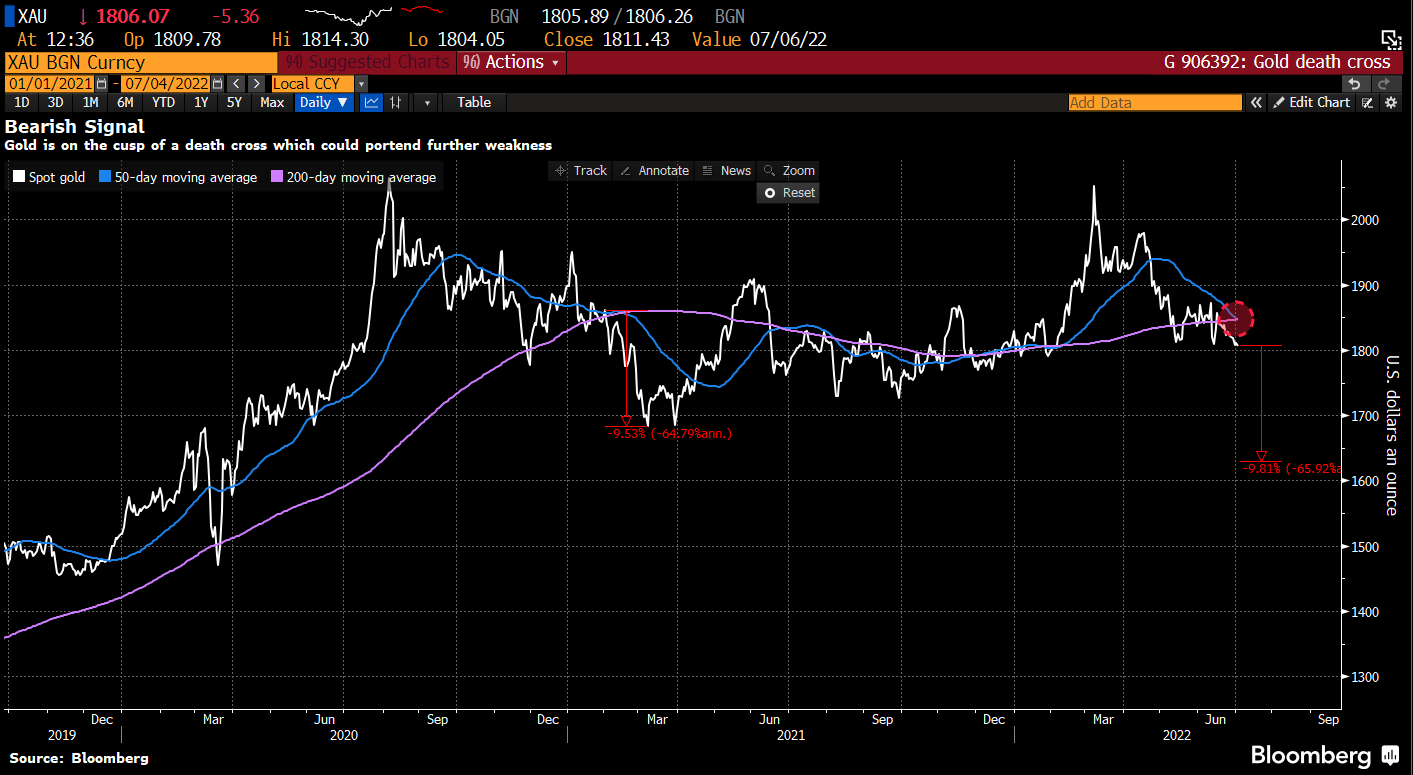 Taking a look at the gold chart from a technical point of view, we can see a strong bearish signal - death cross - that may push the price to $1,600 and snap a 2-year long consolidation. Source: Bloomberg
Taking a look at the gold chart from a technical point of view, we can see a strong bearish signal - death cross - that may push the price to $1,600 and snap a 2-year long consolidation. Source: Bloomberg
Oil
-
Refinery margins remain at elevated levels. This caused oil prices to stay at elevated levels even if situation on the oil market eases
-
High refinery margins cause producers to boost prices. Saudi Arabia increased prices even as it increased production and a commodity in Asia is more available than before (thanks to Russian crude exports redirected there). Saudi Arabia now charges Asian customers with $10 premium over benchmark price
-
Prices for August were increased by $2.8 per barrel compared to July levels
-
In spite of a very tense situation on the global oil market, producers do not increase investments. Investment potential is being limited by ESG considerations. Data shows that oil producers prefer to distribute cash to shareholders rather than invest it
-
Should another upward impulse on oil be launched, prices may increase to as high as $150-170 per barrel
-
However, oil traders should take into account potential for global economic slowdown, which according to some may push prices back below $90 per barrel
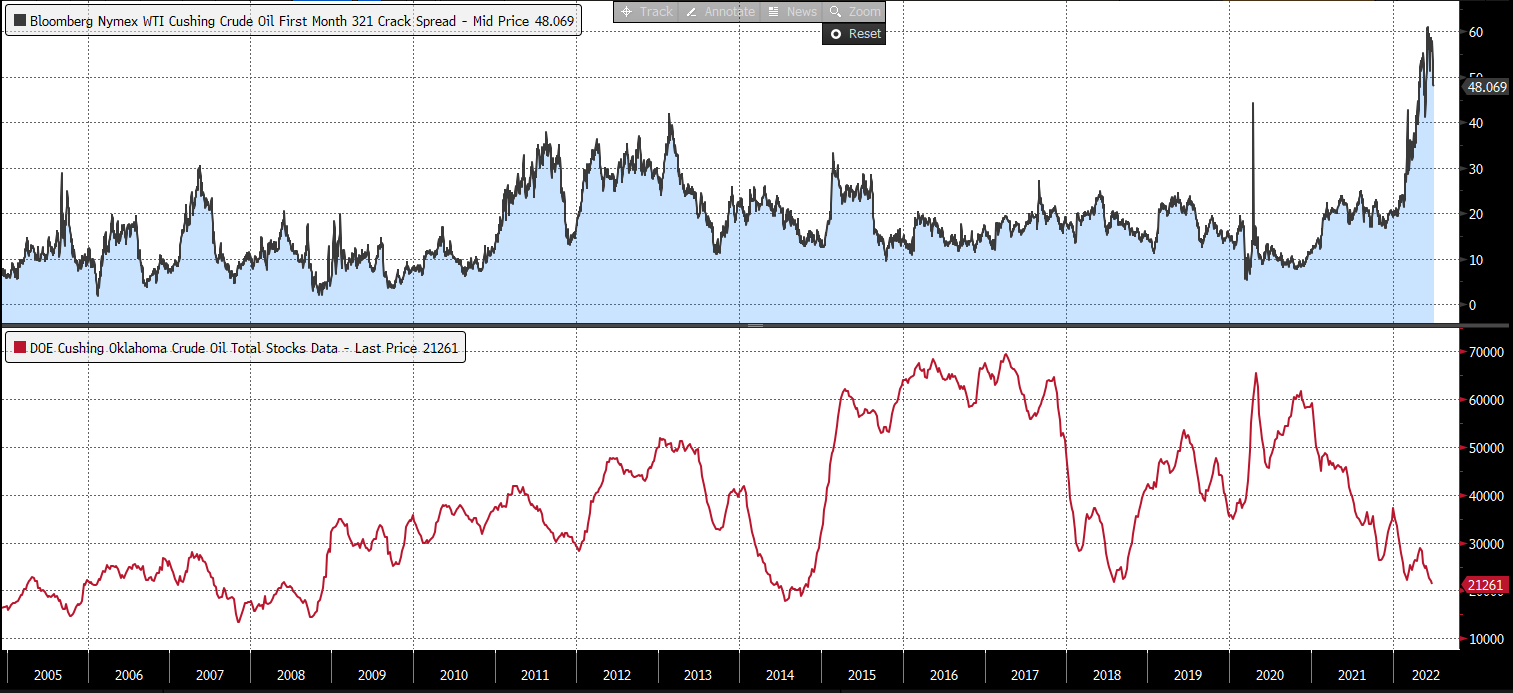 Crack spread shows that oil refinery margins are very high. Moreover, inventories at the US Cushing hub dropped to dangerously low levels signaling that oil is not as available to US refiners as some might think. Source: Bloomberg
Crack spread shows that oil refinery margins are very high. Moreover, inventories at the US Cushing hub dropped to dangerously low levels signaling that oil is not as available to US refiners as some might think. Source: Bloomberg
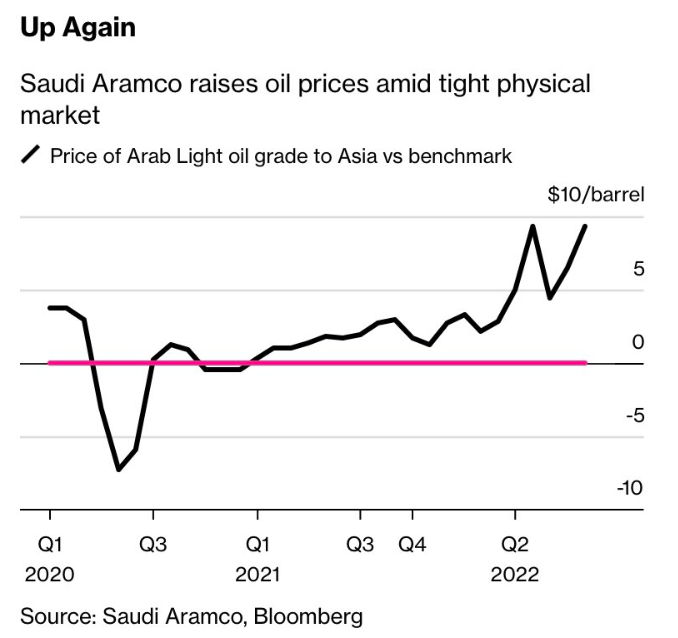 Saudi Arabia boosted oil export prices for Asian deliveries. Source: Bloomberg
Saudi Arabia boosted oil export prices for Asian deliveries. Source: Bloomberg
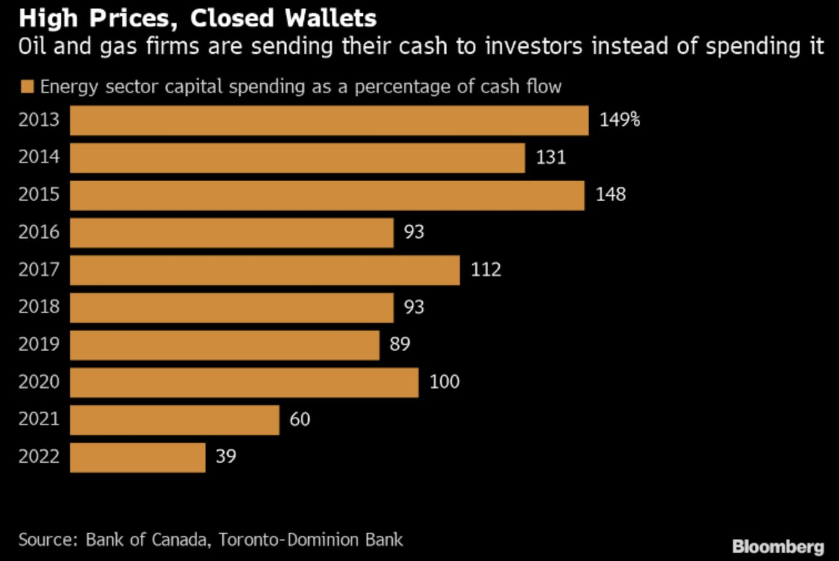 ESG issues discourage oil companies from investing in boosting capacity. This creates a risk that prices will continue to increase if demand returns to normal levels and recession is avoided. Source: Bloomberg
ESG issues discourage oil companies from investing in boosting capacity. This creates a risk that prices will continue to increase if demand returns to normal levels and recession is avoided. Source: Bloomberg
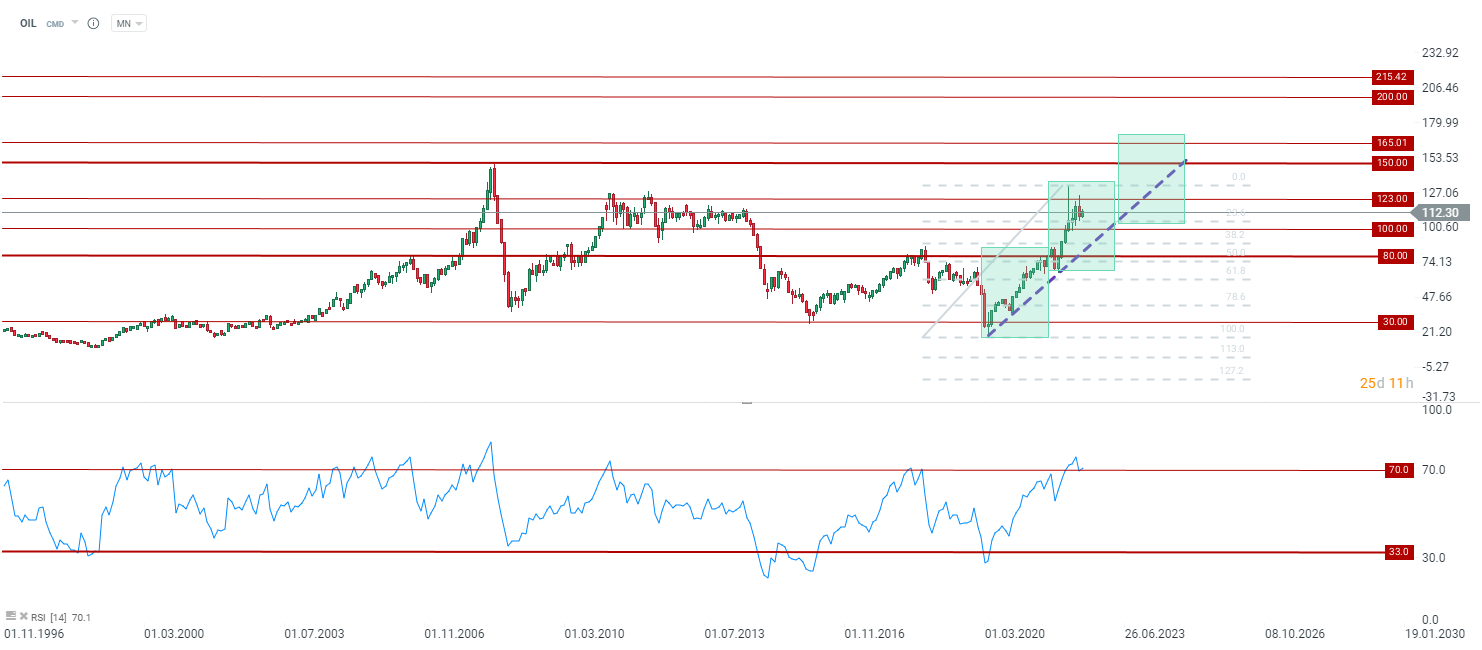 Oil prices are stable. On one hand, the market is very tight due to lower availability of oil. On the other, potential economic slowdown limits upside potential. Source: xStation5
Oil prices are stable. On one hand, the market is very tight due to lower availability of oil. On the other, potential economic slowdown limits upside potential. Source: xStation5
Aluminum
-
Metals market is in the worst condition since the global financial crisis
-
Drop in economic activity in China led to an industrial production drop in the region
-
Aluminum stockpiles in Japanese ports jumped to the highest level in 6 years, showing that market is no longer as tight
-
Copper prices drop below $8,000 per tonne, showing that even recent more optimistic data from China does not offset risk of global economic slowdown, or even recession
-
Moreover, the latest forecasts point to aluminum demand growing slower than supply this year
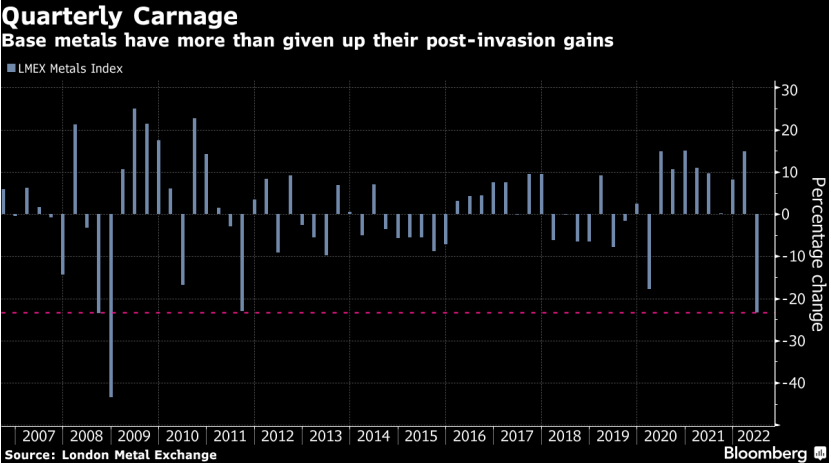 Metals market took a big hit in the second quarter of 2022. Source: Bloomberg
Metals market took a big hit in the second quarter of 2022. Source: Bloomberg
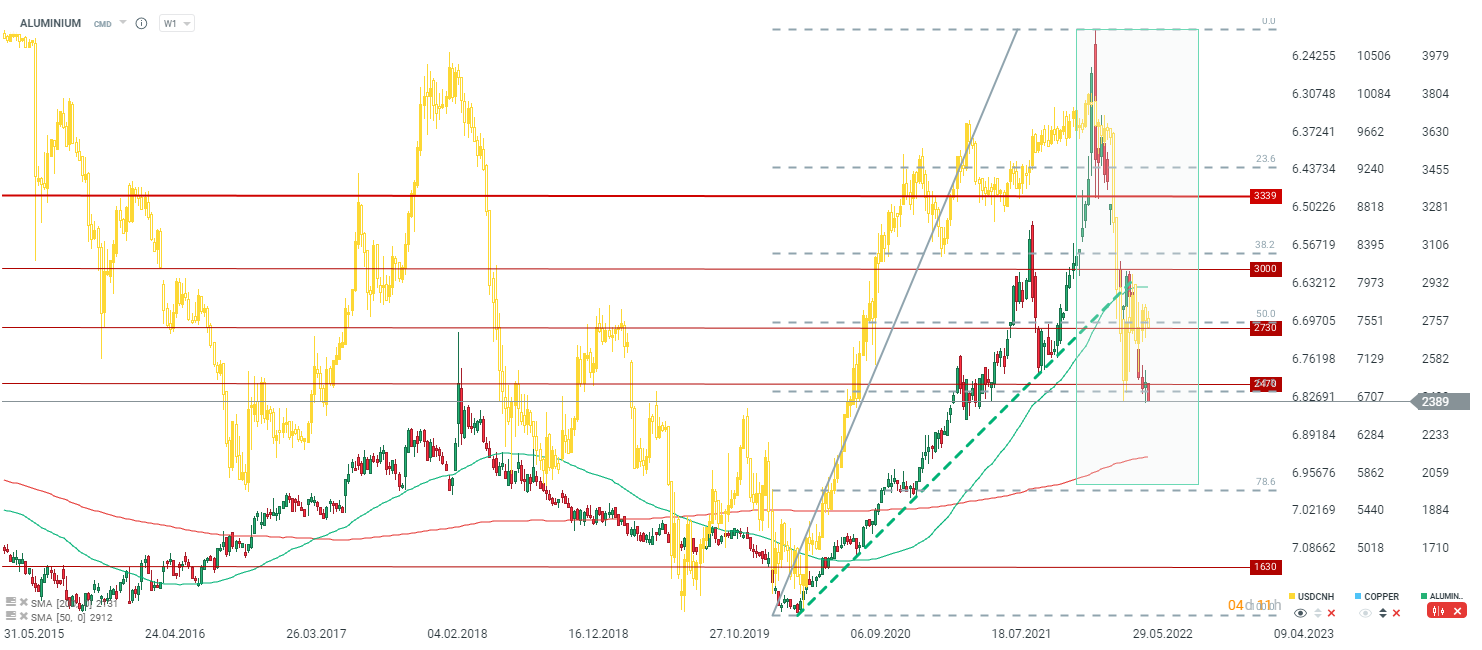 Aluminum prices drop below 2018 highs and below 61.8% retracement of the latest upward impulse. Range of declines from 2008, if repeated, would point to a drop to $2,000. On the other hand, yuan stabilization may lead to stabilization on this market as well. Source: xStation5
Aluminum prices drop below 2018 highs and below 61.8% retracement of the latest upward impulse. Range of declines from 2008, if repeated, would point to a drop to $2,000. On the other hand, yuan stabilization may lead to stabilization on this market as well. Source: xStation5
Cotton
-
Cotton prices finds support in the 96 cents per pound area, close to highs from 2013, 2014 and 2018
-
Prices may drop further given a risk of further deterioration in demand forecasts for this year
-
Cotton demand is assessed to be the lower than in the previous 2 seasons
-
The latest stabilization in oil prices also does not bode well for cotton prices going forward
-
Seasonal patterns hint that sideways trend should dominate until October
-
Cotton trades around 40% below its high. The first sell-off phase during 2011 plunge amounted to 55%
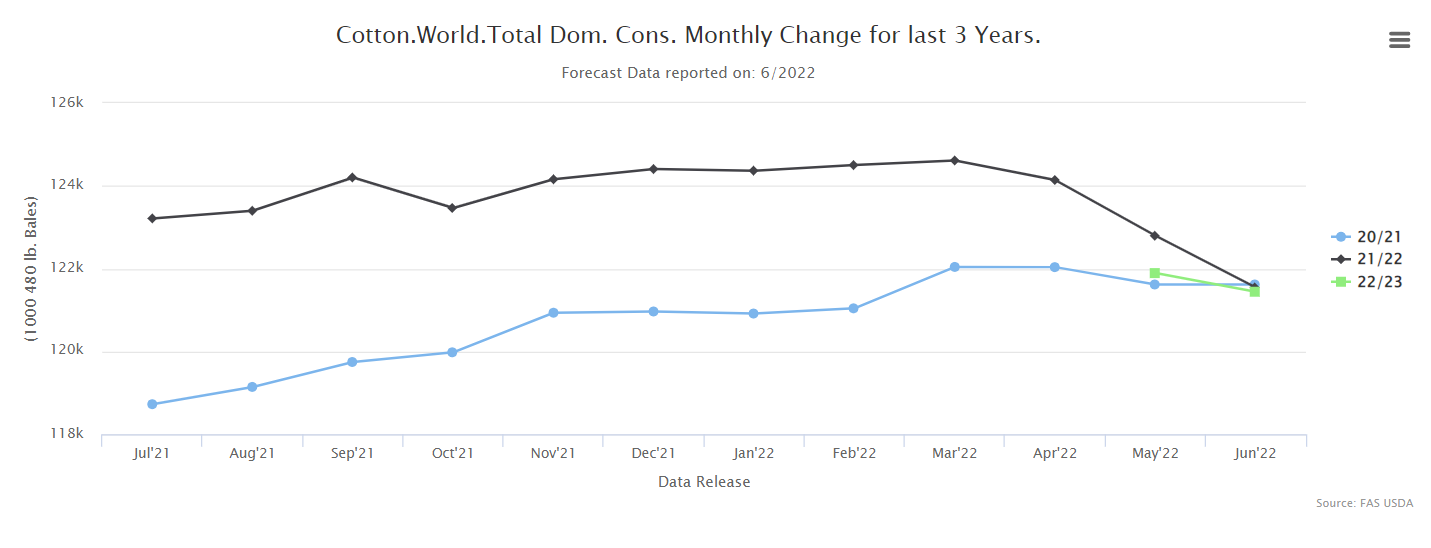 Cotton demand is assessed to be the lowest in 3 years. Source: USDA
Cotton demand is assessed to be the lowest in 3 years. Source: USDA
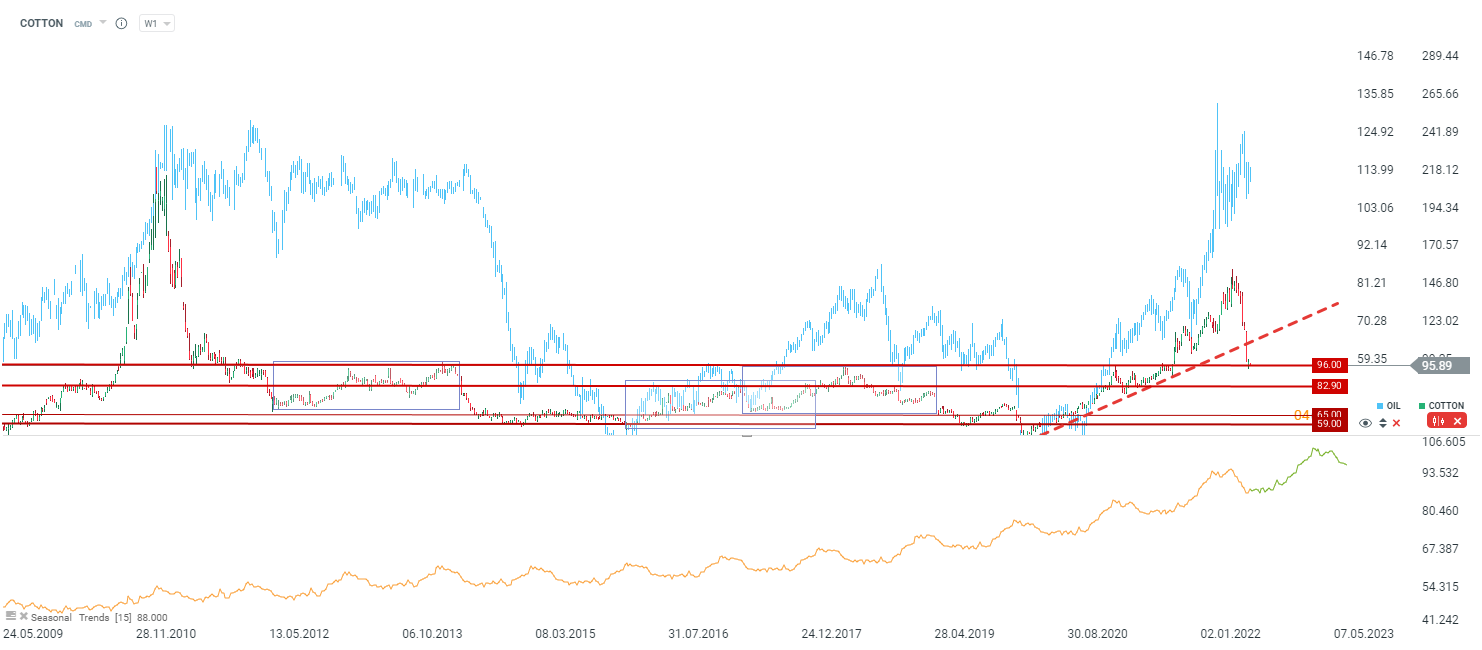 COTTON found short-term support in the 96 cents per pound area. However, a drop below this zone may pave the way for a 10-20 cent drop. It should be noted that back in 2011 cotton prices continued to decline when oil prices stabilized. Source: xStation5
COTTON found short-term support in the 96 cents per pound area. However, a drop below this zone may pave the way for a 10-20 cent drop. It should be noted that back in 2011 cotton prices continued to decline when oil prices stabilized. Source: xStation5
Morning wrap (31.10.2025)
Daily Summary: ECB, FOMC and MAG7 - mixed signals and risk aversion
BREAKING: EIA gas inventories change slightly above expectations. NATGAS increase after EIA data 📌
Breaking: Update on Soybean - China to Buy 12 mt Soy This Year
This content has been created by XTB S.A. This service is provided by XTB S.A., with its registered office in Warsaw, at Prosta 67, 00-838 Warsaw, Poland, entered in the register of entrepreneurs of the National Court Register (Krajowy Rejestr Sądowy) conducted by District Court for the Capital City of Warsaw, XII Commercial Division of the National Court Register under KRS number 0000217580, REGON number 015803782 and Tax Identification Number (NIP) 527-24-43-955, with the fully paid up share capital in the amount of PLN 5.869.181,75. XTB S.A. conducts brokerage activities on the basis of the license granted by Polish Securities and Exchange Commission on 8th November 2005 No. DDM-M-4021-57-1/2005 and is supervised by Polish Supervision Authority.


